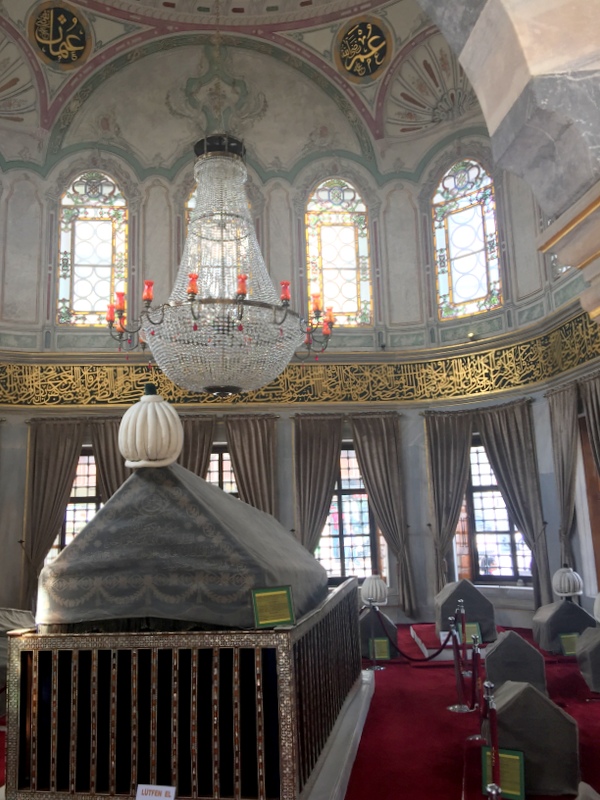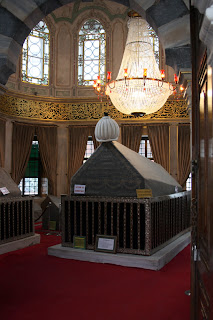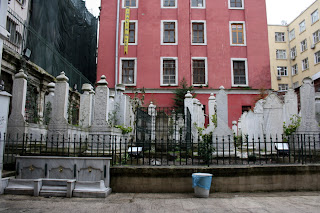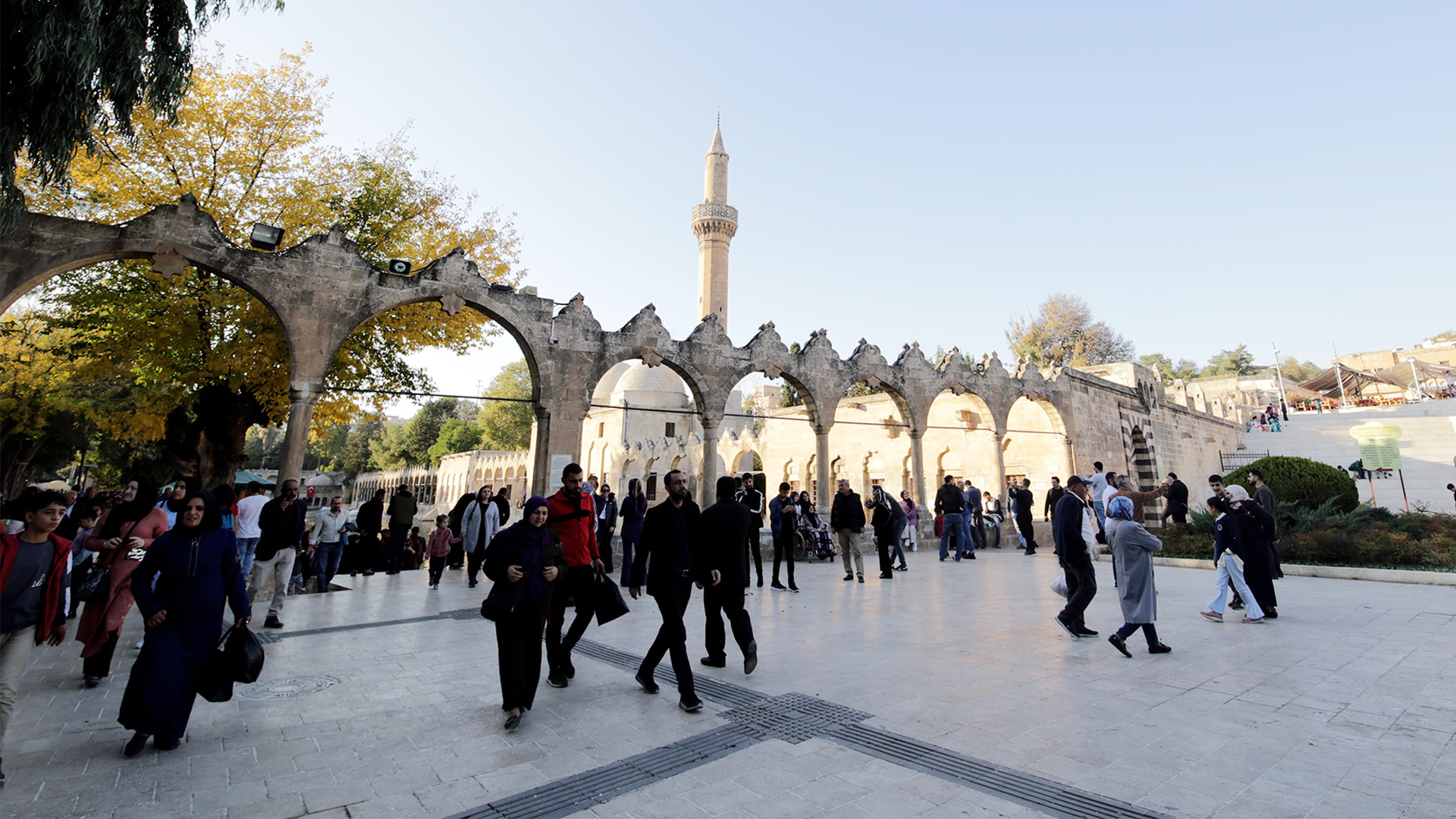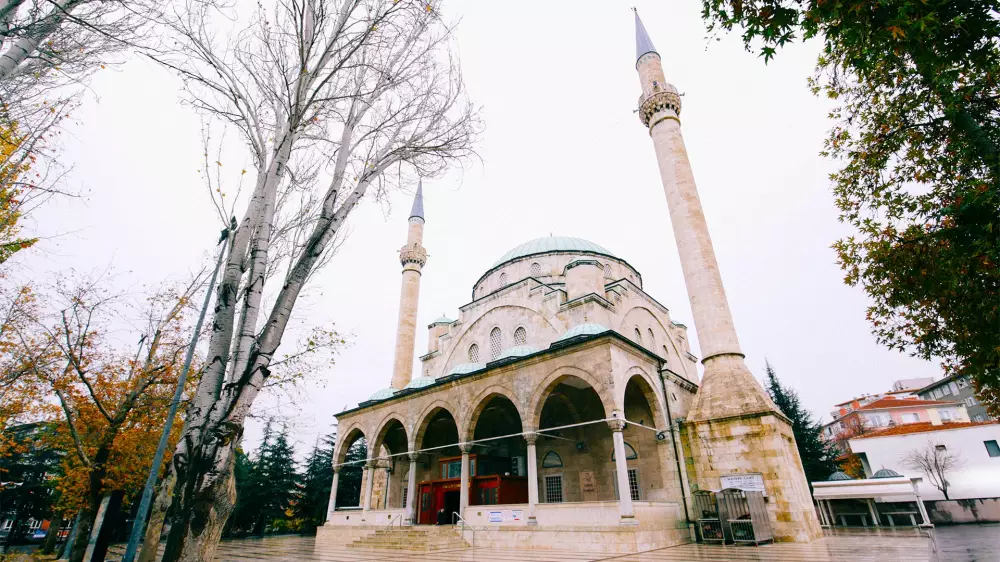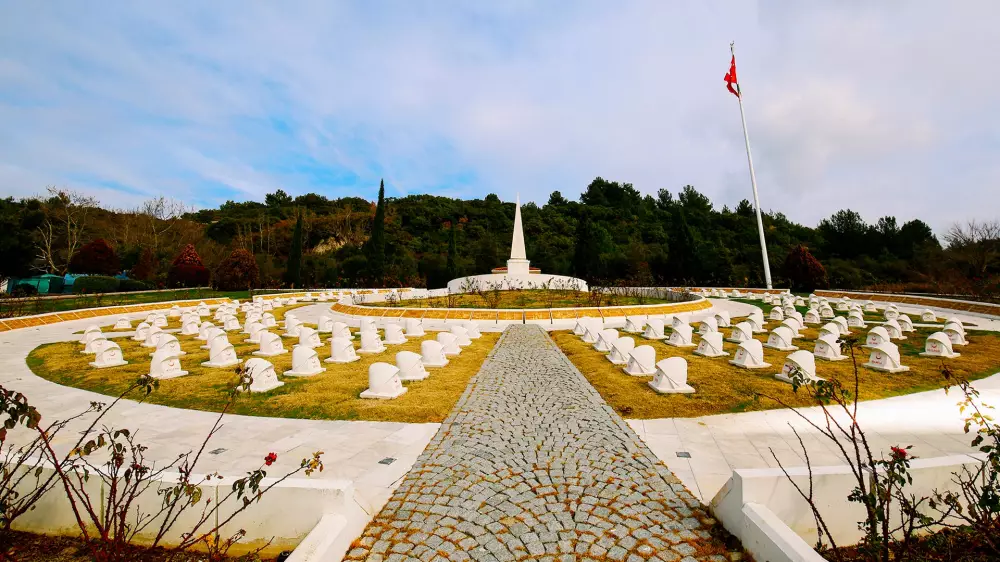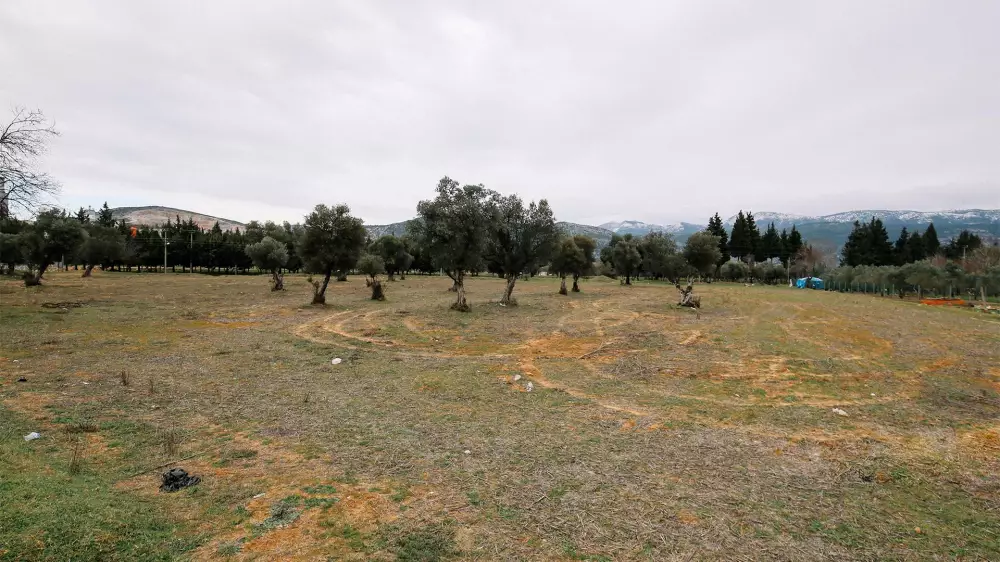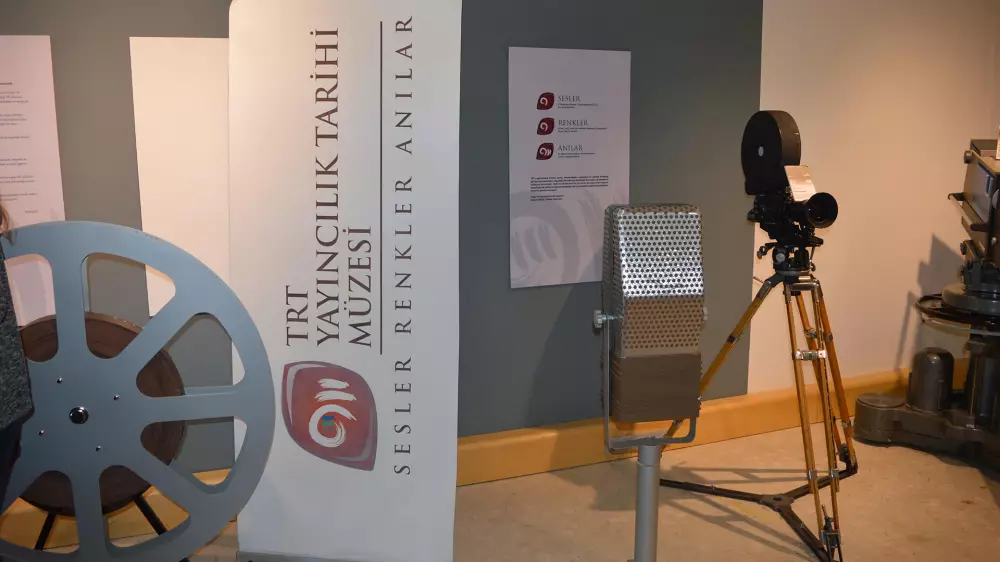
Tomb of Abdulhamid I
23.09.2024 12:34
The Tomb of Sultan Abdulhamid I, located in the Hobyar Neighborhood of Eminönü district of Istanbul province, opposite the 4th Vakıf Han, is a part of the soup kitchen built by Sultan Abdulhamid I in 1776–1777. Sultan Abdulhamid I wanted to have a mosque built here, but he thought that it would be more beneficial to build an soup kitchen next to this large temple located in the most crowded district of the city, such as the New Mosque, and had it built. He added a madrasah, fountain, fountain and library next to this soup kitchen. Mustafa Agha was the building director of the soup kitchen, and Mehmet Tahir Agha, who built the Beylerbeyi Mosque, served as the architect. In the early years of the Constitutional Monarchy, this soup kitchen was demolished and removed by the Minister of Foundations Hayri Efendi, leaving only the tomb in its place. The soup kitchen is located across from Gülhane Park today.
The tomb is extremely regular in terms of marble workmanship and has a baroque style. In the 19th century, J.P. Von Hammer; “This tomb was built in a beautiful and noble style. Although it cannot surpass the beautiful tomb of Suleiman the Magnificent, the freshness and innovation of the building is worth seeing,” he said in his memoirs.
The square-planned tomb is made entirely of marble. There is a courtyard in front. It is a two-story, domed structure that is illuminated by 26 windows. A marble panel (Kadem-i Şerif) containing the footprint of the Prophet of Islam Muhammad is placed in the middle of the north wall.
The tomb of Sultan Abdulhamid I has a square plan with rounded corners and is made entirely of marble. The tomb, which has a courtyard in front, has the 57th verse of the Ankabut Sura written in Thuluth script on the outer courtyard door. The tomb is entered from this courtyard through a three-eyed portico. The 27th-30th verses of the Fecr Sura written by Calligrapher Mehmet Emin are written in celi-thuluth script on the entrance door of the tomb. The floors of this two-story tomb are separated from each other by a molding with a flat cornice. The tomb, which has a dome on the outside, is illuminated by 26 windows. The interior of the tomb is decorated with hand-drawn works. A marble panel covering the footprint of the Prophet is placed in the middle of the north wall. An inscription band is seen surrounding the tomb as well as the windows and cabinets. The Mulk Sura is included in this band written in Thuluth script on marble. The names of Ism-i Celâl, Ism-i Nebî, Çehar yâr-i Güzin and Hasan and Hüseyin are written in medallions inside the pendentives supporting the dome. In addition, the words “Yâ âlimen bi-hâli aleyke ittikâli” are written four times on the round medallion inside the dome. The tomb was restored and opened to visitors in 2009.
Inside the tomb are the tombs of the 27th Ottoman Sultan Abdulhamid I and his son IV, the 29th Ottoman Sultan. In addition to Mustafa, there are also the coffins of Prince Ahmed, Prince Suleyman, Prince Mehmed, Prince Murad, Prince Mehmed Rüştü, Prince Abdulmecid, Prince Murad, Prince Beyazıd, Ayn-ı Shah Sultan, Rabia Sultan, Melik Shah Sultan, Mevhibe Sultan, Fatma Sultan, Alem Shah Sultan, Emine Sultan, Saliha Sultan, Rabia Sultan and Emine Sultan.
Photo Source: https://www.oguztopoglu.com/2012/02/birinci-abdulhamit-turbesi-ve-haziresi.html
Gallery
